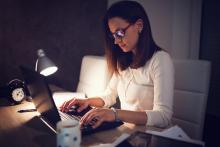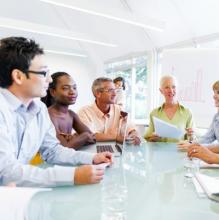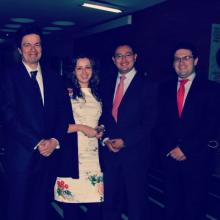Incontinence Group: working with guideline developers


This is part of a series of Cochrane case studies about prioritization work by Cochrane Review Groups. You can read more by visiting the priority setting case study page.
The Cochrane Incontinence Group (CIG) were one of the first Groups to use the James Lind Alliance (JLA) Priority Setting Partnership model almost eight years ago. This approach had been successful in guiding review production for almost a decade, but in recent years the group has worked on refreshing the list of priority reviews that was created as part of the JLA partnership.
They have an ongoing relationship with the National Institute for Health and Care Excellence (NICE) in the UK, and this remains a key component of their prioritization efforts. The CIG is a registered stakeholder with NICE so they receive email alerts about forthcoming guidance topics, respond when a relevant topic is identified, and liaise with the guideline team to ensure reviews are published or updated.
In 2015 they engaged with another key guideline development group in their field - the Incontinence panel of the European Association of Urology (EAU). The EAU has 20 different panels, but the CIG only liaised with one - the Incontinence Panel, a group of European urologists. The focus of this prioritization exercise was to identify gaps in the CIG topic list and to develop a list of reviews that would meet the needs of this important stakeholder group.
The process started with the CIG preparing a list of all their reviews that included the most recent date of publication for each. This allowed the group to easily see which reviews were up to date and which were ripe for revision. The list was then sent to the EAU Incontinence Panel to identify any missing topics, important reviews that needed updating, or titles they thought were no longer clinically relevant and could be marked as stable. The results of this process were not collated by the panel chair; instead each individual member submitted their own feedback. In some cases this lack of consensus created a challenge for the CIG, with panel members giving contradictory rankings. The group noted that if they were to use this model again, they would ask the panel to deliver a consensus verdict.
Another challenge stems from the fact that the panel meet infrequently, so it took approximately six months for feedback to be received. The CIG consider this prioritization exercise to have a shelf-life of about a year, but that the process overall doesn’t have an end date. New treatment options emerge, the need to reassess older approaches is continuous, and both are reflected in the changing needs and opinions of the EAU panel.
The CIG approach to prioritization has the advantage of ensuring that Cochrane incontinence reviews feed into important clinical guidelines, plus they report that it wasn’t particularly onerous. The main task was to compile the initial list for the EAU panel to review. That took a little less than a day ,and maintenance of the list will be even less time-consuming. The NICE ‘push’ method is also a relatively low-impact way of engaging with a key stakeholder, although of course when the group gets a positive response from NICE regarding a guideline update, then there’s a flurry of activity to ensure the review/update is delivered on time!
In their most recent prioritization exercises, the Group has chosen not to invest a lot of time and effort into the prioritization method itself; instead resources are used to deliver reviews and updates themselves. Some might argue that this approach is too narrow, as it cuts out input from consumers. The Group is conscious of this and as a result is thinking about revisiting the JLA method, which served them so well in the past.
If you have any questions or comments about this blog series or if you’d like to tell us about your group’s prioritization work please contact Ruth Foxlee at the Cochrane Editorial Unit – rfoxlee@cochrane.org
Ruth Foxlee, Information Specialist, Cochrane Editorial Unit
Lydia Wilson, Intern, Cochrane Editorial Unit











 The Telegraph (UK) ran the story on the front page under the headline ‘Axe Speed Bumps to Save Lives: NICE says “speed bumps could be removed to cut pollution”.' Whilst somewhat less dramatic, the same spin on the story was across the media:
The Telegraph (UK) ran the story on the front page under the headline ‘Axe Speed Bumps to Save Lives: NICE says “speed bumps could be removed to cut pollution”.' Whilst somewhat less dramatic, the same spin on the story was across the media: So NICE were right that they hadn’t recommend to ‘axe speed bumps’. But they were uniformly and widely misreported as having done so. Is that the fault of the media for sensationalizing, and thus misrepresenting, the story? Or is it the fault of NICE for not handling the story well? As communicators of evidence, we surely have a responsibility to do the best we can to ensure that the evidence is not misrepresented and misused by those with an axe to grind.
So NICE were right that they hadn’t recommend to ‘axe speed bumps’. But they were uniformly and widely misreported as having done so. Is that the fault of the media for sensationalizing, and thus misrepresenting, the story? Or is it the fault of NICE for not handling the story well? As communicators of evidence, we surely have a responsibility to do the best we can to ensure that the evidence is not misrepresented and misused by those with an axe to grind.

